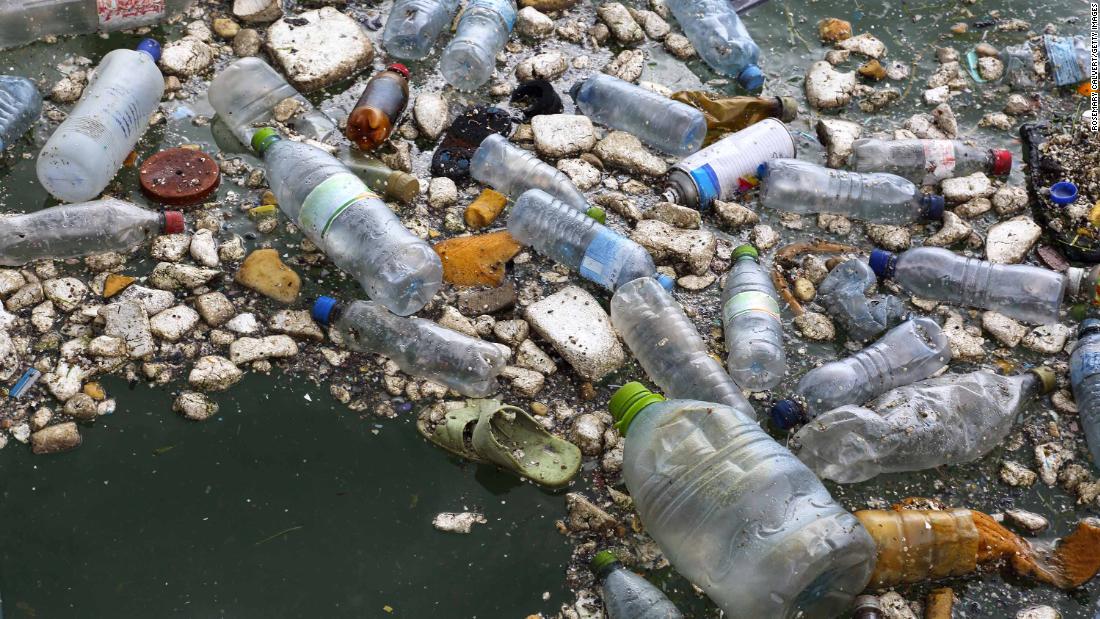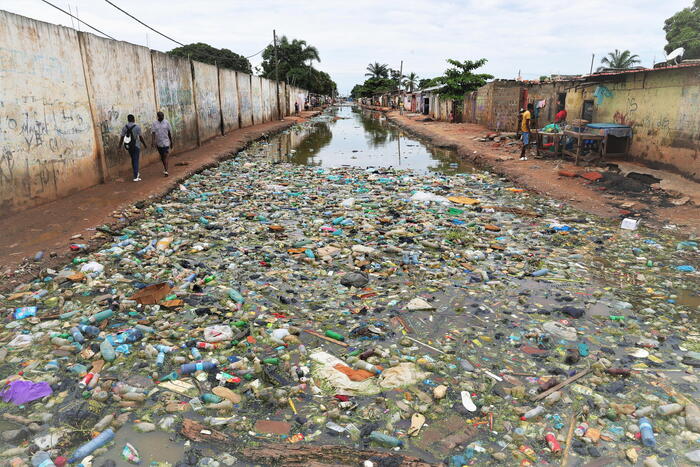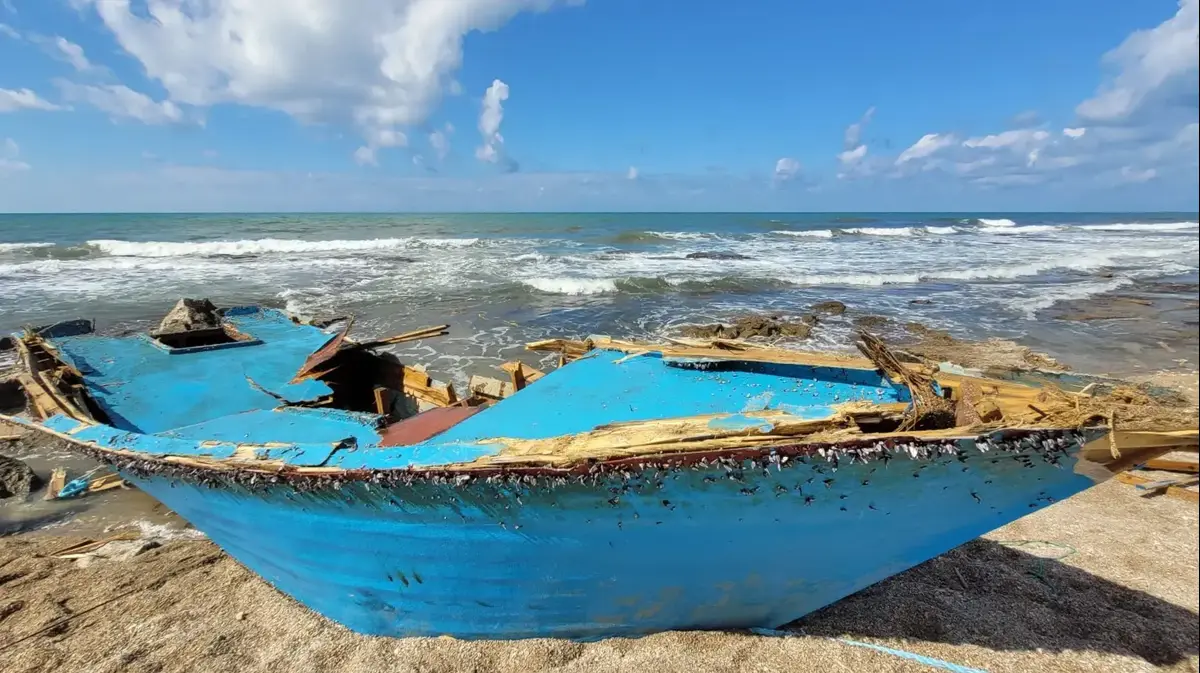The countries that generate the most plastic waste 1:04
(CNN Spanish) -
The inhabitants of rich countries produce much more plastic waste than those of poor countries.
However, the equation is reversed when it comes to those that discharge the most into the ocean, according to a study recently published by Our World in Data.
This is what the results show.
The Philippines is responsible for more than a third of the plastics that are dumped into the oceans, according to Our World in Data analysis of a study originally published in the journal
Science Advances
.
It is followed by four other Asian countries: India (12.92%), Malaysia (7.46%), China (7.22) and Indonesia (5.75).
In sixth place on the list appears Brazil (almost 3.86), the only American on the list, followed by three other Asian countries: Vietnam (almost 2.88), Bangladesh (2.52) and Thailand (2 , 33).
The tenth country that dumps the highest percentage of plastics into the oceans is Nigeria (1.9%), the only African among the 10 that pollute the most.
Globally, 11 million metric tons of plastic waste end up in the oceans each year.
This is one of the main threats facing the seas, along with global warming, overfishing and oil spills, among others.
Plastics can suffocate and trap some aquatic species.
And when they are microplastics (that is, they are less than five millimeters in length) they can even end up in the digestive systems of some species of marine life that ingest them.
advertising
And, although calls are multiplying to minimize the use of single-use plastic, its production is not decreasing, but quite the opposite: it is expected to increase by 30% in the next five years, according to a recently published study. by the Minderoo Foundation (which also explains the impact of this production on the climate crisis).
A 'bubble barrier' traps plastic waste before it reaches the sea
The role of Asia
Asia, which is home to 60% of the world's population, is responsible for the dumping of more than 80% of the plastics that end up in the ocean.
The continent that follows, Africa, pours out just one tenth.
And South America, third on the list, is responsible for 5.5% of the plastics that end up in the oceans.
It is followed by North America (4.5%), Europe (0.6%) and Oceania (0.3).
This means that the Philippines and India, as individual countries, dump more plastic into the oceans than every continent on the planet (except Asia, of course).
This is directly linked to the most polluting rivers.
The Philippines, responsible for 36.38% of plastics, is home to 7 of the 10 rivers that discharge the most plastic into the ocean.
The one that heads the list is the Pásig river.
India, for its part, is home to two of the rivers that carry the most plastic into the ocean.
(By the way, the study on which this analysis is based explains that, contrary to what was previously known, it is not a small number of rivers that are responsible for most of the pollution: 80% of the plastics that end up in the oceans come from more than 1,600 rivers).
Rich countries generate more plastic waste per person, but pollute less
Rich countries generate 0.2 to 0.5 kg of plastic waste per day per person, a figure much higher than that generated by countries such as India (0.01) or the Philippines (0.07).
Of course, the populations in some Asian countries are much higher, but as Our World in Data makes clear, the numbers for rich countries are still very high in absolute terms: the UK generates twice as much plastic waste as the Philippines.
However, the amount of waste generated is only one of the factors, and there are two others that influence the final results: the management of this waste and the probability that the waste that is not managed well will reach the rivers and eventually the oceans.
And it is in these factors that the panorama changes radically.
In rich countries, according to the portal, almost all plastic waste is incinerated, recycled or sent to landfills with proper management.
In contrast, "low- to middle-income countries tend to have poorer waste management infrastructures," says Our World in Data.
The numbers are telling: mismanagement of waste in the Philippines is 100 times higher than in the UK.
Added to this is the probability that plastics actually reach rivers and oceans, influenced by various factors: distances from river basins, land, climate, and land use, for example.
At this point, again, the Philippines tops the list.
According to the study recently published by the Minderoo Foundation, of the 130 million metric tons of single-use plastics that were generated in the world in 2019, 35% were burned, 31% were buried in managed landfills and 19 % went directly to land or oceans.
What is happening in Latin America?
In the region, Brazil tops the list of countries that dump the most plastic into the oceans, with 3.86%.
It is followed in second place and far behind by Guatemala (0.73%).
And then in the region are Haiti (0.71%), the Dominican Republic (0.64%) and Venezuela (0.61%).
Argentina is responsible for 0.42%, while Mexico for 0.36%.
Plastic


/cloudfront-eu-central-1.images.arcpublishing.com/prisa/NIFZFFYBFVAU5FVWDHC43ESC5M.jpeg)












